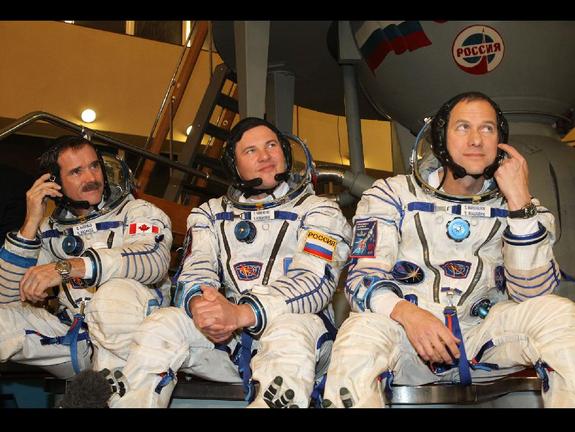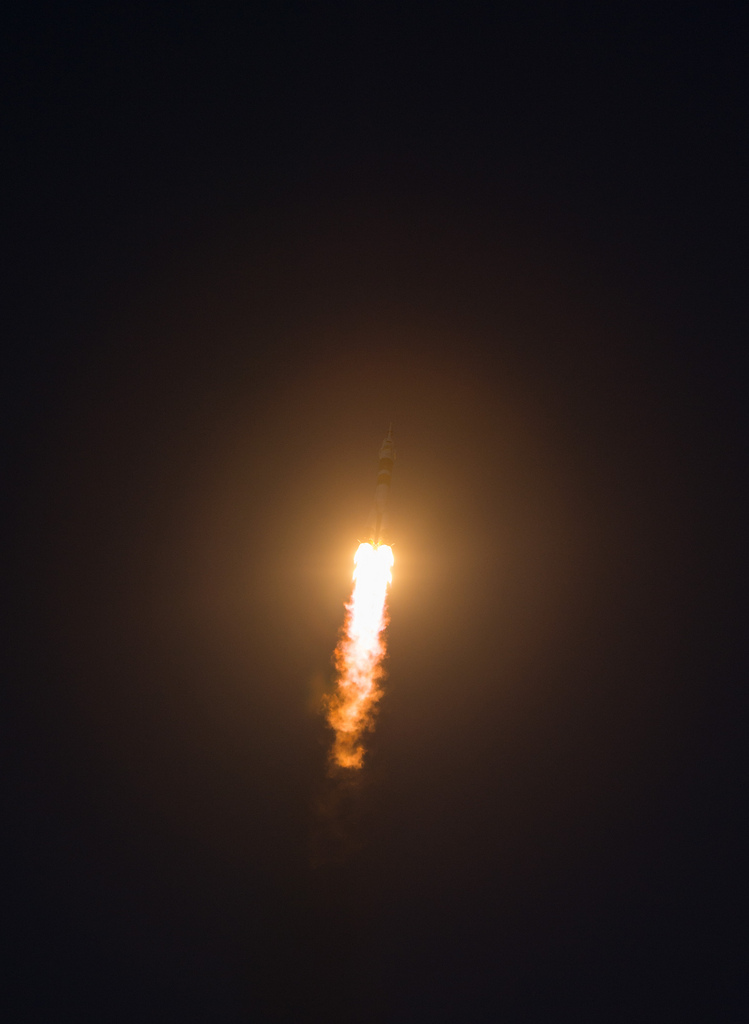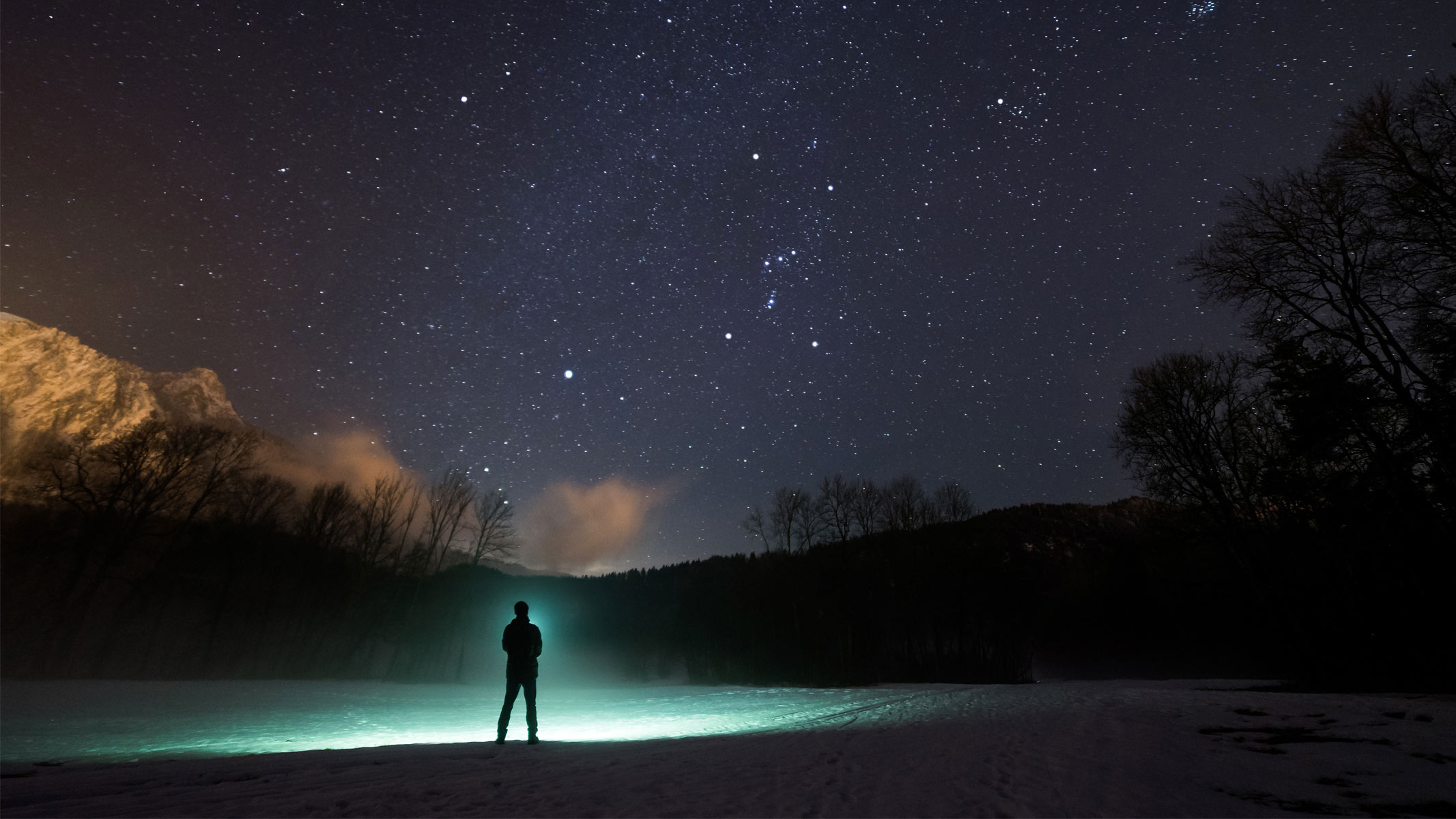3 New Crewmembers to Arrive at Space Station Friday

The Russian Soyuz spacecraft carrying the three newest residents of the International Space Station is set to dock with the high-flying laboratory on Friday morning (Dec. 21).
Set to arrive at the space station at 9:12 a.m. EST (1412 GMT), the capsule will deliver Canadian Space Agency astronaut Chris Hadfield — who will become the station's first Canadian commander — as well as Russian Federal Space Agency cosmonaut Roman Romanenko and NASA astronaut Tom Marshburn. The spaceflyers' journey started yesterday (Dec. 19) when they launched from Kazakhstan's Baikonur Cosmodrome at 7:12 a.m. EST (1212 GMT).
After they reach the space station, the astronauts will perform leak checks on the seal between their Soyuz TMA-07M capsule and the space station's docking port on the Rassvet module. These checks should take about two hours, clearing the way for the hatches between the two vehicles to be opened at around 11:45 a.m. EST (1645 GMT).
You can watch the docking of the Soyuz live here via SPACE.com's NASA TV feed. The broadcast begins at 8:30 a.m. EST (1330 GMT), followed by live hatch opening coverage at 11:15 a.m. EST (1615 GMT). [Expedition 34 Launch in Pictures]
Complete crew
Three crewmembers are already living onboard the space station awaiting the new arrivals: commander Kevin Ford of NASA, and cosmonauts Oleg Novitskiy and Evgeny Tarelkin, both flight engineers for the station's Expedition 34 mission. Once the new trio joins them, the Expedition 34 team will be complete, bringing the orbiting laboratory back up to its usual six-person crew complement.
Romanenko, who has flown to the space station once before, said that a six-person team is key for the kind of work they want to do in the lab.
Breaking space news, the latest updates on rocket launches, skywatching events and more!
"I think we need to continue as we've been doing, six people per increment," Romanenko, a veteran of one previous trip to space, said in a preflight interview with NASA. "I think this will again maximize the number of experiments that we do on station. Also, this will facilitate the process of adapting to space. It will help us develop skills that we'll be able to use when flying people to other planets."
While working and living in orbit, the spaceflyers will be responsible for monitoring the 110 experiments onboard, as well as keeping their bodies in shape, and performing maintenance to keep the station running smoothly.
First Canadian commander
In March 2013, Ford, Novitskiy and Tarelkin will head back to Earth, leaving Marshburn, Romanenko and Hadfield alone on the space station to begin the Expedition 35 mission. At this point, Hadfield will take over for Ford as mission commander, making him the first Canadian astronaut to hold that position on the orbiting complex.
"It's a big deal for me, but also it's a big deal for my country, for my space agency and for where I'm from, and I'm happy that people are interested in it," Hadfield said in a preflight NASA interview.
This flight will mark Hadfield's third trip to space, and second visit to the International Space Station.
"I'm really looking forward to not just visiting space but moving to Earth orbit and having all of the internal changes, the understanding and the revelation that comes with that," Hadfield said during a preflight interview with NASA. "I'm really looking forward to it."
Before joining the astronaut corps in 2004, Marshburn worked as a flight surgeon for NASA. He flew to the space station once before, in 2009, on the STS-127 space shuttle mission.
"I've experienced 11 days docked at the space station, 16 days in space on my last flight, so getting back to life in zero gravity, that is never boring, everything from putting on your clothes to brushing your teeth to working to transfer of hardware, all of its fun in zero-g," Marshburn told NASA before the launch. "I can’t wait to do that again."
Follow Miriam Kramer on Twitter @mirikramer or SPACE.com @Spacedotcom. We're also on Facebook & Google+.

Miriam Kramer joined Space.com as a Staff Writer in December 2012. Since then, she has floated in weightlessness on a zero-gravity flight, felt the pull of 4-Gs in a trainer aircraft and watched rockets soar into space from Florida and Virginia. She also served as Space.com's lead space entertainment reporter, and enjoys all aspects of space news, astronomy and commercial spaceflight. Miriam has also presented space stories during live interviews with Fox News and other TV and radio outlets. She originally hails from Knoxville, Tennessee where she and her family would take trips to dark spots on the outskirts of town to watch meteor showers every year. She loves to travel and one day hopes to see the northern lights in person. Miriam is currently a space reporter with Axios, writing the Axios Space newsletter. You can follow Miriam on Twitter.

